An easy way to shake up your pesto! Busiate with pesto Trapanese is a staple dish in Trapani, Sicily made with cherry tomatoes, basil, and toasted almonds!
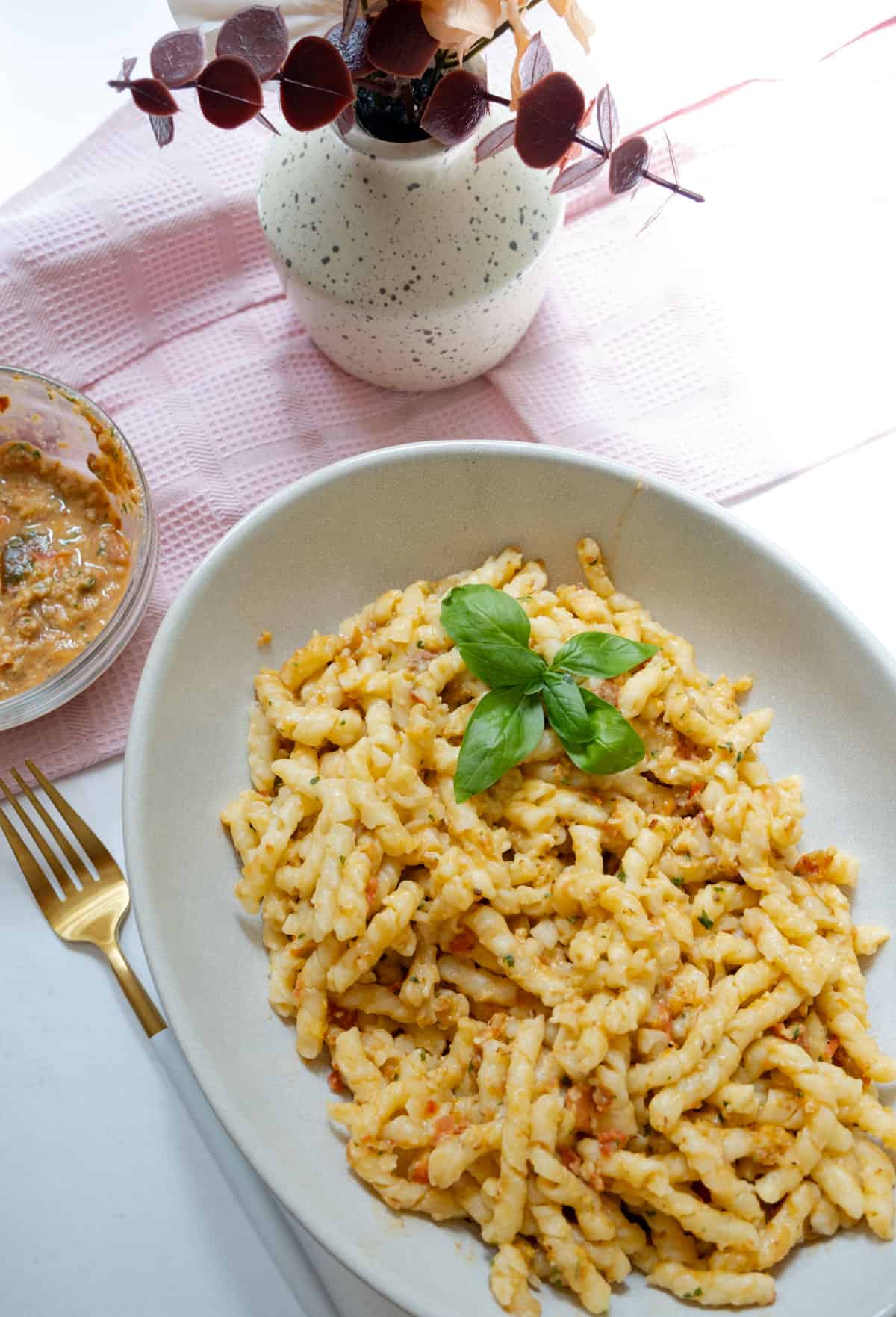
If you love pesto, try some of our other favorite pesto meals: Creamy Pesto Shrimp Pasta, Pistachio Pea Pesto, Pistachio Pea Pesto Stuffed Chicken, Artichoke Pesto Pasta or Lemon Pesto Spaghetti with Scallops.
Jump to:
Ingredient Notes and Substitutions
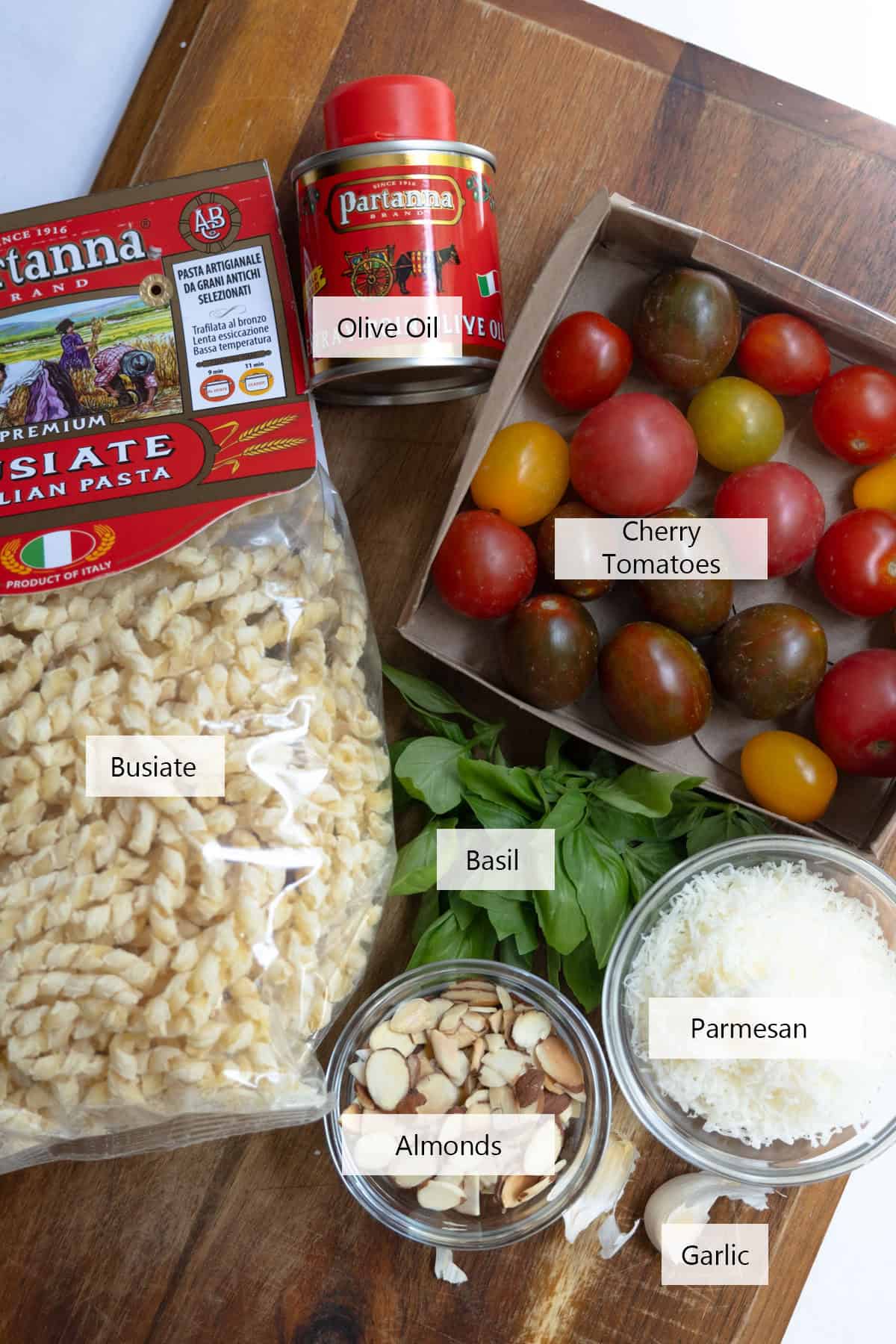
Tomatoes. I use cherry tomatoes because they're easy to find and go well with parmigiana. A lot of people, use Piccadilly tomatoes which are more traditional. They are way more difficult to find.
Pasta. Busiate is a corkscrew pasta a little bit longer than a rigatoni. They're made by wrapping semolina dough around a metal rod. They are great for really gathering up all the sauce within the nooks and crannies of the corkscrew shape.
You can use whatever kind of pasta you want! I would substitute farfalle or rotini if I weren't using the traditional busiate that's generally served with pesto alla Trapanese
Nuts. Traditionally, almonds are the nut of choice for this pesto. Sicily is known for its nuts, especially its pistachios. You can use blanched almonds or toasted almonds. If you only have pistachios or pine nuts though, that will do the trick.
*Please see the recipe card below for more information on ingredients.
Step-by-step directions
This Sicilian pesto comes together in just a couple of minutes. You can make it ahead of time or make it while your pasta is boiling. Bring a large pot of water to a boil and add kosher salt. Add your pasta and cook as directed on the box.
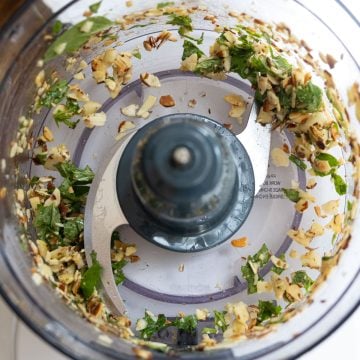
Step 1: In a food processor, combine basil, garlic, salt and almonds. Process until completely combined.
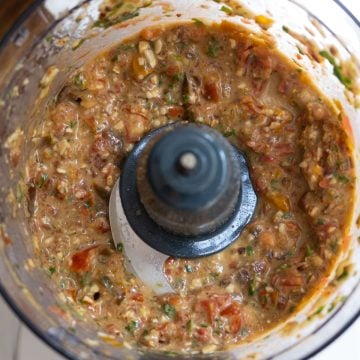
Step 2: Add in the cherry tomatoes and process while slowly pouring in the olive oil until processed.
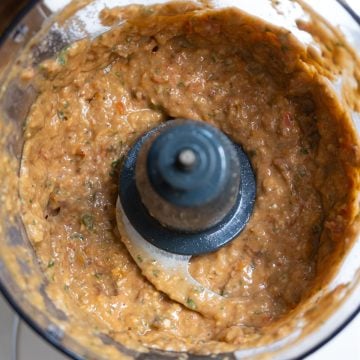
Step 3: Pour in the parmesan and combine.
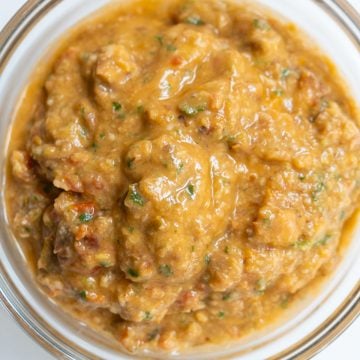
Step 4: I like my trapanese pesto to look like the image above. It's creamy but still has texture to it. Adjust the olive oil as necessary to achieve the desired texture.
Step 5: Drain the pasta and save ¼ of pasta water. Combine the pasta and the pesto in the pot that you boiled the pasta in. I like to use this pot while it's still hot to steam off some of the water in the cherry tomatoes and help the pasta develop a creamy texture.

Step 6: Slowly pour in the pasta water to combine while hot. Stir well and serve with extra parmesan cheese.
Pro-tips
- Slowly pour the olive oil into the processor so that you can see how much olive oil you want to add. It's about a ¼ cup but you want the pesto to reach a smooth consistency.
- Use high-quality extra virgin olive oil. With dishes that are not "cooked" like this, the simple flavors are really important to get the best out of the dish.
- Use the same hot pot that you boiled the pasta in! This is important to get the creamiest pasta!
Recipe FAQs
There are so many dishes that you can substitute Trapanese pesto for regular, or Genovese, pesto. It can be as easy as serving this on ricotta bruschetta or with Italian chicken cutlets. I'd also substitute this with some of our recipes like our Creamy Pesto Shrimp Pasta, Italian Red Potato Salad (No Mayo), or OG Italian Pasta Salad.
Genovese pesto is the green pesto you see all the time. It has a ton of basil and it uses pine nuts. Trapanese pesto has cherry tomatoes and it uses almonds instead of pine nuts.

Our Favorite Simple Italian Staples
Please leave a comment and star rating below in the recipe card! I love to hear what you think of our recipes. Feel free to tag us on Instagram @vindelgiudice.
📖 Recipe
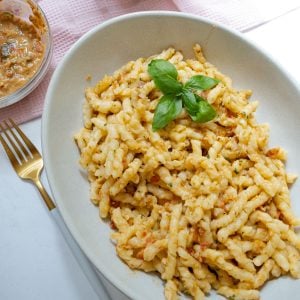
Busiate Pasta with Trapanese Pesto
Equipment
- 1 food processor
Ingredients
- 1 lb busiate pasta
- 1.5 cups cherry peppers
- 15 basil leaves
- 2 cloves garlic
- 3 tablespoon blanched or toasted almonds
- ¼ cup + 2 tablespoon extra virgin olive oil
- ¼ cup parmesan cheese
- ½ teaspoon kosher salt
Instructions
- Bring a large pot of water to a boil and add kosher salt. Add your pasta and cook as directed on the bag.
- In a food processor, combine basil, garlic, salt and almonds. Process until completely combined. Add in the cherry tomatoes and process while slowly pouring in the olive oil until processed. Add the parmesan and combine.
- Drain the pasta and save ¼ of pasta water. Combine the pasta and the pesto. Slowly pour in the pasta water to combine while hot. Stir well and serve.
Notes
- Slowly pour the olive oil into the processor so that you can see how much olive oil you want to add. It's about a ¼ cup but you want the pesto to reach a smooth consistency.
- Use high-quality extra virgin olive oil. With dishes that are not "cooked" like this, the simple flavors are really important to get the best out of the dish.

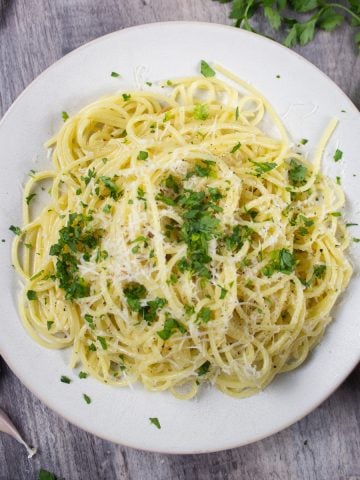
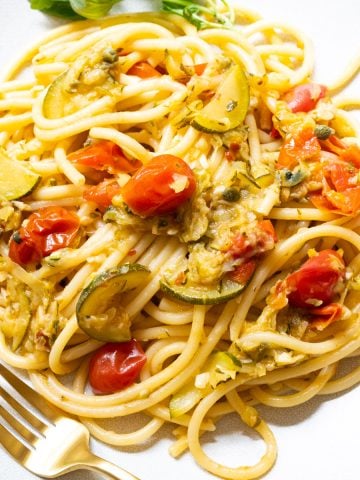
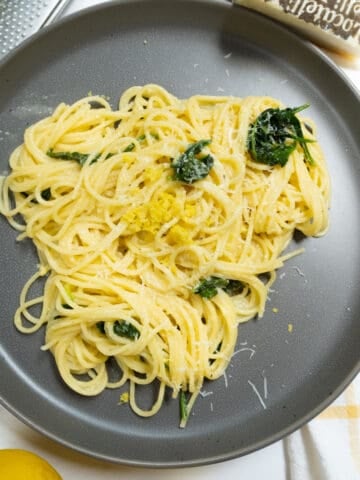
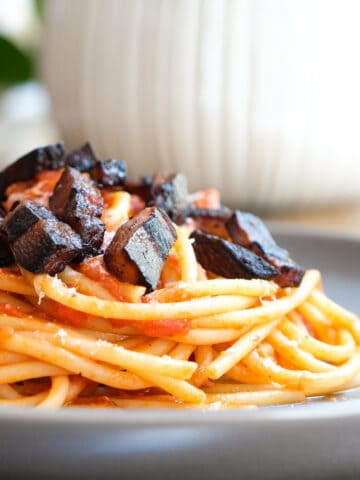
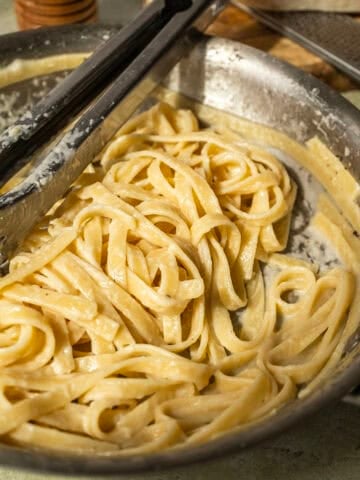
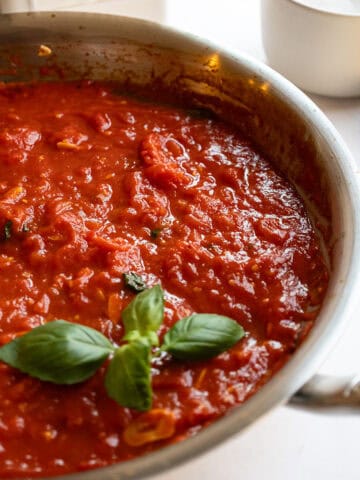
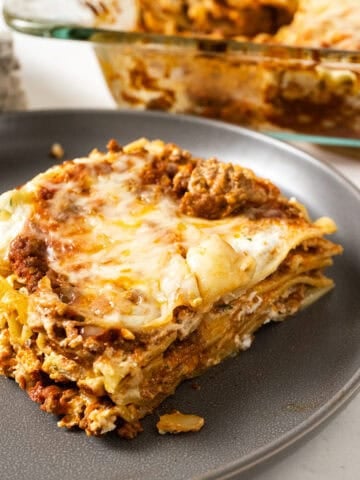
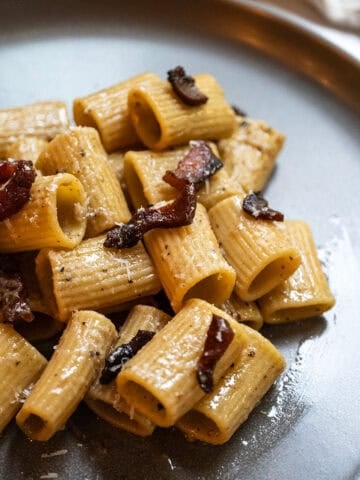
Shahar
Great recipe! It came out very close to what we ate on our trip to Sicily! Will definitely make it again
Vinny
This is a classic Sicilian pasta dish made with a trapanese pesto which is not as common in the US. Definitely give it a shot because I guarantee you'll love it.